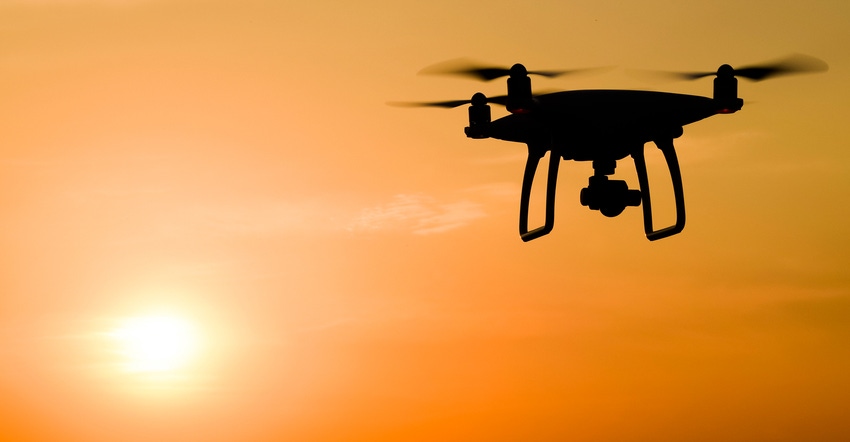May 11, 2020

Nolan Berg remembers his first interaction with Sony representatives. Berg is the precision systems specialist for Peterson Farms Seed, an independent corn and soybean seed brand that serves Minnesota and the Dakotas.
And while this is the story of a focused regional seed player, Berg’s experience with some new technology has value for anyone looking at new tools for the farm. As for connecting with Sony and that company’s new aerial imaging technology?
“Actually, I was approached by them,” Berg recalls. “When I first started to dive into the drone world, we were looking at the value we could find with this tool.” Berg spoke at a drone-focused conference in Las Vegas three years ago; after the speech, two representatives from Sony came up to Berg to ask questions.
“They gave me their card, and I didn’t hear from them for about a year,” Berg recalls. But when he did hear from them, what he found was an advanced imaging project Sony was involved in to make data captured from airships more valuable.
“We’ve been working behind the scenes, doing testing on camera systems and software, and providing feedback of what we think and what it would take for the tool to work for everybody,” Berg explains.
Economical approach
Berg acknowledges that there are other imaging players in the multispectral market. He’s found the Sony approach to be less costly. “The fact is, [Sony] has a sensor at a fairly manageable price point for a seed company,” he says.
Economics and performance are what can win the day with new technology. Berg explains that the Sony system can provide imagery faster from the field by processing in the sky. That allows for faster action with imagery that’s provided.
Berg’s job is about half involved with seed production; the other half involves exploring new technology for dealers and growers. Working with Sony has shown opportunities for imagery into the future. For Peterson Farms Seed, the challenge is determining how best to deploy new technology, either by providing it as a service or having growers take on the work themselves. The jury is still out on that question.
Earlier, Farm Progress offered a look at what Sony is providing including a conversation with Rantizo, a drone application company. Sony’s first analysis tool is the stand count, and Berg explains what sets it apart from others he’s tried.
“I think Sony’s is more refined. If you plant variable-rate corn and flew a stand count map over the field, it would obviously show variations,” Berg says.
He notes that with the Sony system you can apply your as-planted map into the app, and the system will calculated the planting data based on the variable-rate information. So if you planted 30,000 in one area and 38,000 in another, the system calculates an accurate difference.
“The system will calculate an accurate difference,” he says. “Field areas are within the right range for what was planted; the map will show up as green. Other systems doing stand counts don’t work that way.”
Super stand counts
And what about the stand counts themselves? What’s the real value of a drone count? For Berg, the stand count is a valuable management tool for a seed field. “If I’m going into a field, I will count a few rows and I’ll do 15 to 20 counts per field. That’s a tiny percentage of that field,” he says.
Meanwhile, the Sony system, while it doesn’t image the entire field for a count, does take a picture on every acre during a flyby. The system then analyzes each single picture. Each picture has 40 counts, so if you do a 100-acre field, Berg says that’s 4,000 stand counts from the field.
The bigger sample helps end sampling bias, where someone may have captured better or worse areas of a field that can skew the numbers. Berg explains that with the software, “You can manage the replant decision based on thresholds; so if the stand is below, say, 50%, you can go out there and map off those blocks and replant the acres.”
Berg knows that drone imagery has value in different ways. He notes that the company plans to roll out this service to its seed dealers and find more use cases going forward. In some cases, satellite imagery may still be better and more efficient. But as new software tools become available, Berg plans to test them to see their value. Stay tuned.
You can learn more about the technology at pro.sony/agriculture
About the Author(s)
You May Also Like






